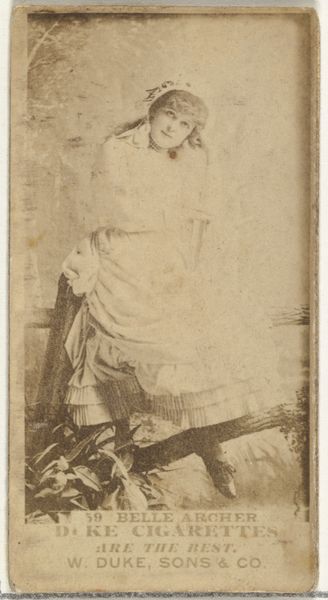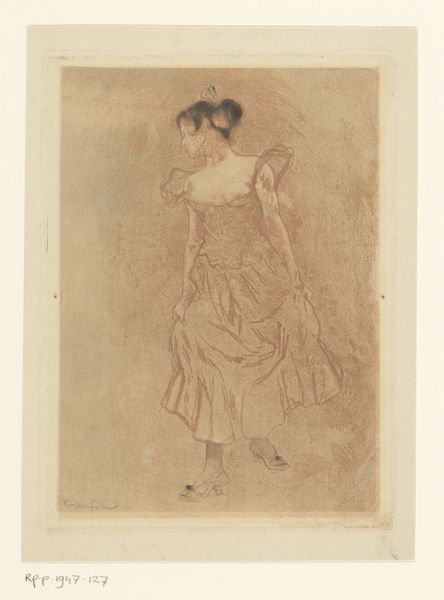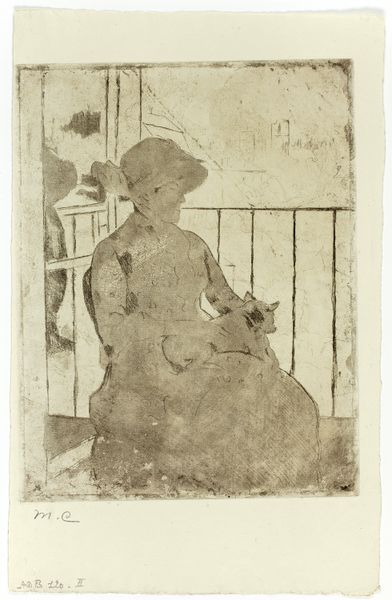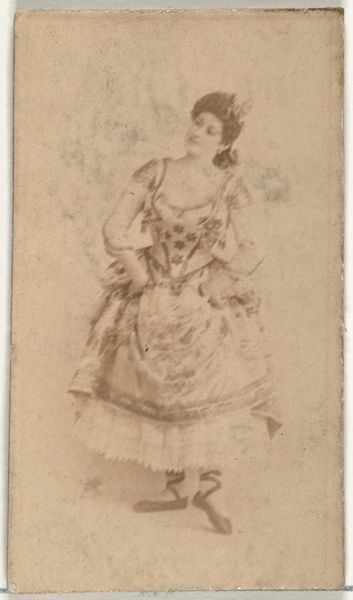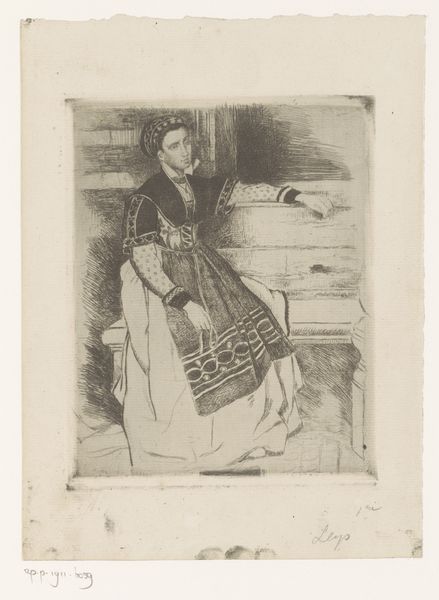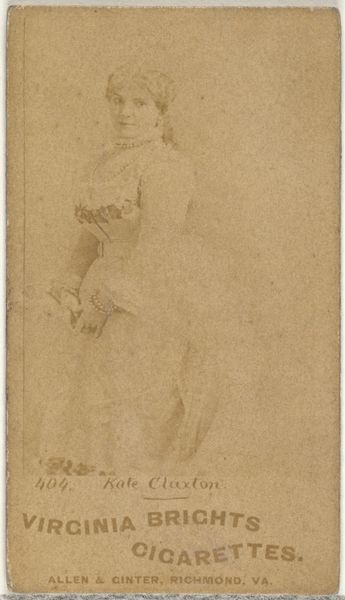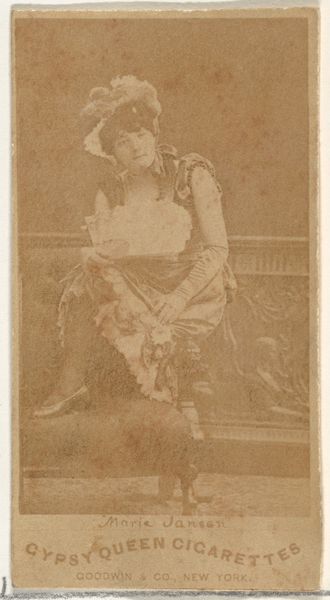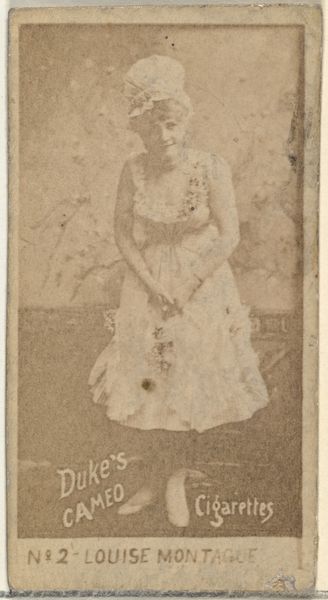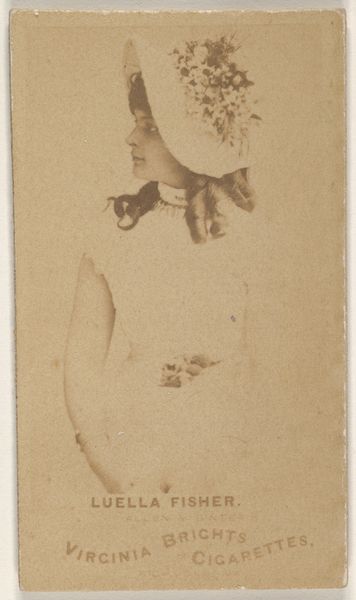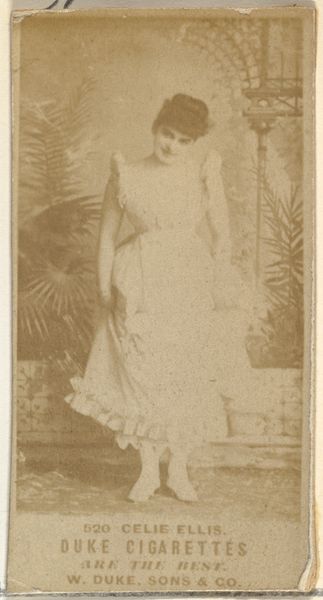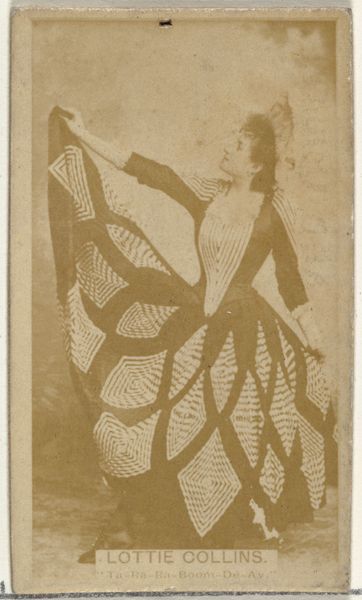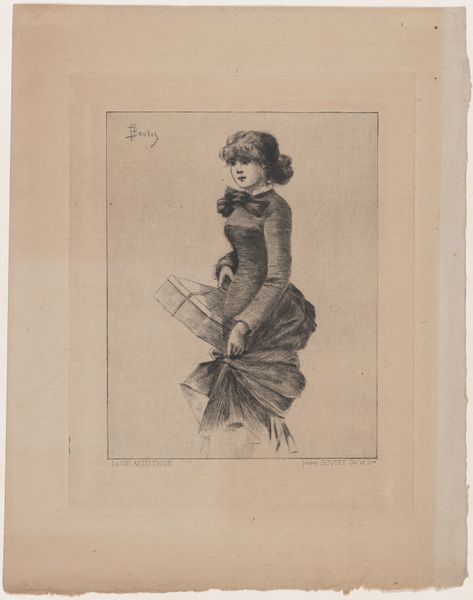
Card Number 126, Mlle. Perrine, from the Actors and Actresses series (N145-6) issued by Duke Sons & Co. to promote Duke Cigarettes 1880s
0:00
0:00
drawing, print, photography
#
portrait
#
drawing
#
art-nouveau
# print
#
figuration
#
photography
#
coloured pencil
Dimensions: Sheet: 2 11/16 × 1 3/8 in. (6.8 × 3.5 cm)
Copyright: Public Domain
Editor: Here we have "Card Number 126, Mlle. Perrine, from the Actors and Actresses series" by W. Duke, Sons & Co., dating back to the 1880s. It was created as a promotional item for Duke Cigarettes. It seems to be a photograph, maybe with colored pencil? There's something unsettling about the woman posed with the cigarette. What strikes you about this image? Curator: It’s unsettling precisely because it normalizes the commodification of women and harmful substances. Consider the Gilded Age context. Advertising, like this card, fueled consumer culture. It presented idealized images of women like Mlle. Perrine, linking her image to the allure of cigarettes. This isn't just portraiture; it’s a powerful, subtle form of manipulation, normalising both smoking and a very specific image of femininity for a predominantly male gaze. Does it make you think about the ethics of advertising? Editor: Absolutely, especially given the power dynamics. Were these actresses compensated fairly, and were they aware of how their image would be used to push products? It all feels very exploitative. Curator: Exactly! The question becomes: who benefits from this representation, and at what cost? Think about how the tobacco industry specifically targeted women with these ads, linking smoking to ideas of emancipation. These images actively worked to shape and limit social norms. Where do you think this piece fits into current conversations about image making? Editor: Well, now we're much more aware of the potential harms of advertising and of the skewed images of women portrayed in the media. It's like seeing the roots of that issue here, almost frozen in time. I'll certainly be thinking more critically about where those images come from and how they are circulated. Curator: Yes, seeing it placed in our context lets us think about power dynamics involved in creating, marketing and understanding these types of images. We can be both fascinated and repulsed by these artifacts.
Comments
No comments
Be the first to comment and join the conversation on the ultimate creative platform.
